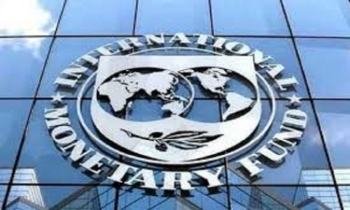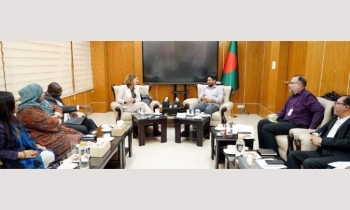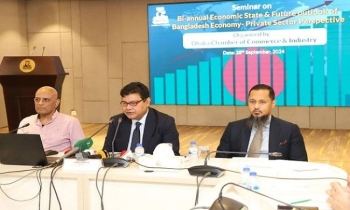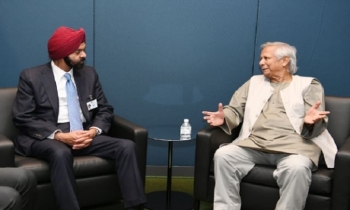Why are regional organisations failing in South Asia?
Shahadat Hossain || BusinessInsider
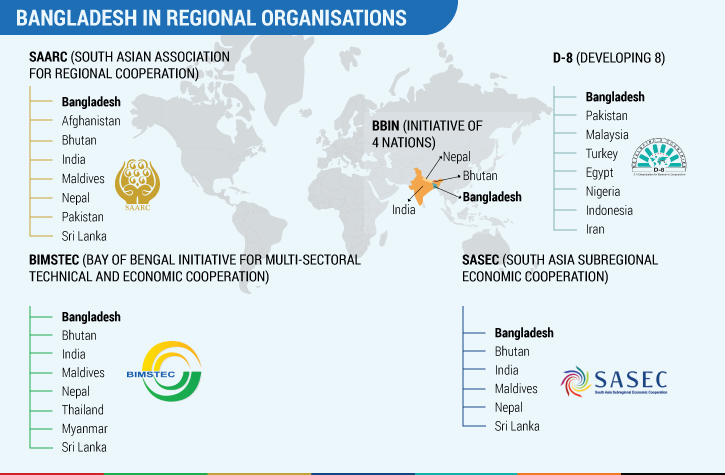
Graphics: Business Insider Bangladesh
Almost all the countries of South Asia at least once took a leading role to form a regional organisation. Some half-a-dozen regional organisations have been formed but they are not worth the candle.
As a South Asian country, Bangladesh is a member of several regional organisations like SAARC, BIMSTEC, SASEC, D-8, BBIN, and IORA. Now China is offering Bangladesh to join the Regional Comprehensive Economic Partnership Agreement (RCEP) involving 15 Asia-Pacific countries. Bangladesh is also working to form another regional bloc involving five Muslim countries - Bangladesh, Maldives, Malaysia, Indonesia and Brunei. So, it’s a vital question, how many regional organisations do South Asian countries need? Where most of the organisations do not seem to work, what kinds of benefits are Bangladesh accruing from these organisations?
Experts said despite their tremendous potential, these regional bodies still look puny.
SAARC: When seven South Asian countries formed the South Asian Association for Regional Cooperation in 1985, there was no Association of Southeast Asian Nations (ASEAN) or many trade blocs that are very much operational now. Yet, the intra-regional trade under SAARC remains within 5 percent of their external trade for a year. But the intra-regional trade volume within the ASEAN countries soared to around 35 percent.
“SAARC’s ambition was to promote economic and technical cooperation. But because of India and Pakistan’s rivalry, South Asian small countries are also deprived of regional cooperation,” Bashir Ahmed, professor of Government and Politics Department at Jahangirnagar University told Business Insider Bangladesh.
Experts criticise both India and Pakistan---nuclear armed neighbours--- for SAARC’s failure. SAARC 19th summit has been deferred since 2014 which was supposed to happen every two years. The 19th SAARC summit has not been held primarily because of India’s opposition to convening the summit in Pakistan. India has been accusing Pakistan of cross-border terrorism. Bangladesh, Nepal and Bhutan also followed India and kept off from joining.
Bay of Bengal Initiative for Multi-Sectoral Technical and Economic Cooperation (BIMSTEC):
India looked very enthusiastic about BIMSTEC, sans Pakistan. But the forum has also failed to achieve any significant progress since its inception 25 years ago. BIMSTEC could not become a very effective organisation in the last two decades due to multiple reasons. So far only four summits have been held.
In response to a query Professor Bashir Ahmed said, “BIMSTEC members failed to determine their common goal, member countries’ bilateral relations are not that toasty. Even the secretarial body is also not well structured and the leaders seem poorly committed to regional cooperation.”
He said, within the European Union or ASEAN, countries feel a sense of balance of power in terms of economy, military etcetera. But in BIMSTEC power has been imbalanced. That is also an issue for BIMSTEC for not performing at the optimum level.
As SAARC and BIMSTEC resorted to stalemate, other South Asian countries became concerned. Bipin Ghimire, a Nepali National and doctoral Candidate at the Department of International Relations in South Asian University, New Delhi, told Business Insider Bangladesh that Regional organisations are the only platform for south Asian countries to meet and discuss their mutual issues. Although SAARC has a low profile, the states cannot quit regional commitments with bright prospects under the current global scenario.
South Asia Subregional Economic Cooperation (SASEC):
Due to its belligerent relations with neighbouring Pakistan, India took the initiative to form the South Asian Sub-Regional Economic Cooperation or SASEC in 2001 excluding Pakistan. In SASEC India, Bangladesh, Nepal. Bhutan, Sri Lanka, Maldives and Myanmar are the member countries. Bangladesh’s Executive Committee of the National Economic Council approved the SASEC Integrated Trade Facilitation Sector Development Program on 1 June, 2022. This project is supposed to facilitate trade with India through Akhaura, Sonamasjid, Tamabil, Bibir Bazar, Birol, Darshana, Sheora, Sonahat and Teknaf border points.
The Bangladesh, Bhutan, India, Nepal (BBIN) Initiative is a sub-regional architecture of the countries in Eastern South Asia, a sub-region of South Asia.
As Pakistan opposed motor vehicle movement among the geographically connected SAARC nations, India took the BBIN agreement initiative. Under BBIN agreement Indian motor vehicles can make trips from Calcutta to Agartala and Guwahati via Dhaka and Sylhet. India’s northeastern province, especially Tripura, Assam can get access to Chattogram seaport under BBIN. Bangladesh also will be able to export products straight to Nepal and Bhutan by using Indian territories.
But critics say that SASEC, BBIN are Indian connectivity initiatives for its land-locked north eastern provinces. Dr Maruf Mallick a German based Bangladeshi scholar and expert told Business Insider Bangladesh, in South Asia India is the biggest country. SAARC can balance the power in South Asia. It is the common platform for South Asian countries. So it could be a potential organisation for all the south Asian nations. But from SASEC, BBIN only India may take the lion’s share.
Developing 8 or D-8:
Bangladesh is involved in another regional cooperation named D-8. It is an organisation of 8 developing Muslim countries compromising Bangladesh, Pakistan, Malaysia, Indonesia, Egypt, Turkey, Iran and Nigeria. The vision of D-8 is to promote intra- state trade and ensure execution of bilateral and multilateral commitments. Not many actions, only 10 summits are their accomplishment.
Recently Bangladesh hosted a D-8 foreign minister-level meeting in Dhaka. Three countries cancelled their delegates’ visit at the last hour. Experts said D-8 countries have no common interest.
“In D-8, no member countries have found a common interest. I did not see any achievement of this organisation. In the last ministerial summit in Dhaka, there was no supreme delegation from any country, so it’s not functioning actually,” Dr Ahsan H Mansur, Executive Director, Policy Research Institute, told Business Insider Bangladesh.
Mansur said not only D-8, other South Asian regional organisations are also not performing well. SAARC is now a dead organization for India-Pakistan rivalry. BBIN has gone nowhere. Bhutan has some objections about BBIN, but it could be held with the other three countries. Some possibilities exist with BIMSTEC. But Myanmar is the big issue here. Myanmar has political differences from most other nations. Without its domestic sustainability, it is difficult to engage in any cooperation with Myanmar.
Dr Mustafizur Rahman, Distinguished Fellow of Center for Policy Dialogue (CPD) is considering some hope in regional cooperation. He told Business Insider Bangladesh that SAARC is not working as expected. But for the South Asian Free Trade Agreement, Bangladesh can export to India duty free. He added that the Free trade agreement under BIMSTEC is also under discussion. But it is also being delayed. BIMSTEC is a potential organisation for energy cooperation though there is no tangible progress. Therefore, Bangladesh should progress its bilateral, trilateral relations with its neighbours.
In Southeast Asia, ASEAN is the most successful regional organisation. Bangladesh is engaged in dialogue for signing an FTA with ASEAN. But as the Rohingya crisis remains unresolved, it is difficult for Bangladesh to get access to ASEAN market. Dr Mallick explained to Business Insider Bangladesh that this country has grown some geographical limitations to joining ASEAN. Bangladesh has no political and cultural relation with South East Asia. So, Bangladesh can gain from SAARC rather than other regional bodies.

